Mary Cronk Farrell's Blog, page 11
June 2, 2016
It's Time to Thank a Teacher...
One of my heroines is a middle school teacher. She is one of the most dedicated people I know in any profession. She cares deeply about her students' learning and goes way beyond the requirements of the job.
Teachers require courage, commitment to the common good and a selfless dedication day in and day out. Did you know that it was public school teachers in Norway who organized one of the few successful nonviolent campaigns against the Nazis in World War II?
Did you know that it was public school teachers in Norway who organized one of the few successful nonviolent campaigns against the Nazis in World War II?
When the Nazis invaded Norway, military defenses crumbled within days, and the new government ordered all teachers to join an association led by Nazi storm troopers. Among the new rules for schools:
Textbooks will be changed so they conform with Nazi viewpoints;Every child must learn German as a second language; andTeachers must instruct their students in the fundamentals of Nazism
More than 85% of Norwegian teachers refused the orders, forcing the government to close schools. "It was a matter of conscience. We couldn't have looked our families and friends in the face if we hadn't taken this stand," one teacher explained. In America today, it is underfunded classrooms, overboard mandated testing and lack of instructional autonomy driving teachers away.
In America today, it is underfunded classrooms, overboard mandated testing and lack of instructional autonomy driving teachers away.
In Florida, Nevada, Kansas and and Indiana teachers are quitting in droves.
In a school district in East Phoenix, Arizona, an elementary school principal keeps the toilets running. He's also the district’s director of maintenance. Teachers are doubling up on duties, but haven't had a raise in seven years.
In cities like Boston and San Francisco, teachers are priced out of housing. Photo and details courtesy of the San Francisco Chronicle. San Francisco kindergarten teacher Rebecca Sheehan-Stross rents the dining room of an apartment in Oakland. The dining room. That's where she lives with no closet and little privacy. After a long day of teaching, she babysits to try and make ends meet.
Photo and details courtesy of the San Francisco Chronicle. San Francisco kindergarten teacher Rebecca Sheehan-Stross rents the dining room of an apartment in Oakland. The dining room. That's where she lives with no closet and little privacy. After a long day of teaching, she babysits to try and make ends meet.
Other San Francisco teachers have after-school jobs tending bar or driving for Uber. A few have lived in their cars or stayed in hostels.
Teachers in the U.S. obviously are not suffering like Norwegian teachers did under Nazi occupation, some of who ended up in prison camp. But the committed teachers who work hard every day for our children and the future of our country belong to this same sodality of generous commitment, caring and courage. Kirkenes prison camp, photo: Arkivverket.no
Kirkenes prison camp, photo: Arkivverket.no
Thirteen-hundred teachers were arrested when they refused to return to the classroom. Despite harsh treatment, the educators held firm and continued to do so when nearly 500 were sent to Kirkenes, and Arctic concentration camp and forced to labor with Russian POWs.
Their journey started by cattle-car... "This was followed by a sea voyage, in conditions that horrified even the Nazi doctor who went on board…. The ship had room for only 250 passengers, but all 499 were crammed in. Many could not even lie down, though they were now ill with “pneumonia, gastric ulcers, asthma, bronchitis, hemorrhage and mental derangement.” ~ Thanks to Peace Pledge Union, London.
All but one of the teachers survived, and their bravery gave hope to people throughout Norway. Finally the occupation government gave up and released them to go home.
You can read a Norwegian Prisoner's diary entries here...
You can read more about America's teacher shortage here....
You can encourage or thank a teacher by remembering her when you vote in local, state and national elections.
Teachers require courage, commitment to the common good and a selfless dedication day in and day out.
 Did you know that it was public school teachers in Norway who organized one of the few successful nonviolent campaigns against the Nazis in World War II?
Did you know that it was public school teachers in Norway who organized one of the few successful nonviolent campaigns against the Nazis in World War II?When the Nazis invaded Norway, military defenses crumbled within days, and the new government ordered all teachers to join an association led by Nazi storm troopers. Among the new rules for schools:
Textbooks will be changed so they conform with Nazi viewpoints;Every child must learn German as a second language; andTeachers must instruct their students in the fundamentals of Nazism
More than 85% of Norwegian teachers refused the orders, forcing the government to close schools. "It was a matter of conscience. We couldn't have looked our families and friends in the face if we hadn't taken this stand," one teacher explained.
 In America today, it is underfunded classrooms, overboard mandated testing and lack of instructional autonomy driving teachers away.
In America today, it is underfunded classrooms, overboard mandated testing and lack of instructional autonomy driving teachers away. In Florida, Nevada, Kansas and and Indiana teachers are quitting in droves.
In a school district in East Phoenix, Arizona, an elementary school principal keeps the toilets running. He's also the district’s director of maintenance. Teachers are doubling up on duties, but haven't had a raise in seven years.
In cities like Boston and San Francisco, teachers are priced out of housing.
 Photo and details courtesy of the San Francisco Chronicle. San Francisco kindergarten teacher Rebecca Sheehan-Stross rents the dining room of an apartment in Oakland. The dining room. That's where she lives with no closet and little privacy. After a long day of teaching, she babysits to try and make ends meet.
Photo and details courtesy of the San Francisco Chronicle. San Francisco kindergarten teacher Rebecca Sheehan-Stross rents the dining room of an apartment in Oakland. The dining room. That's where she lives with no closet and little privacy. After a long day of teaching, she babysits to try and make ends meet.Other San Francisco teachers have after-school jobs tending bar or driving for Uber. A few have lived in their cars or stayed in hostels.
Teachers in the U.S. obviously are not suffering like Norwegian teachers did under Nazi occupation, some of who ended up in prison camp. But the committed teachers who work hard every day for our children and the future of our country belong to this same sodality of generous commitment, caring and courage.
 Kirkenes prison camp, photo: Arkivverket.no
Kirkenes prison camp, photo: Arkivverket.no Thirteen-hundred teachers were arrested when they refused to return to the classroom. Despite harsh treatment, the educators held firm and continued to do so when nearly 500 were sent to Kirkenes, and Arctic concentration camp and forced to labor with Russian POWs.
Their journey started by cattle-car... "This was followed by a sea voyage, in conditions that horrified even the Nazi doctor who went on board…. The ship had room for only 250 passengers, but all 499 were crammed in. Many could not even lie down, though they were now ill with “pneumonia, gastric ulcers, asthma, bronchitis, hemorrhage and mental derangement.” ~ Thanks to Peace Pledge Union, London.
All but one of the teachers survived, and their bravery gave hope to people throughout Norway. Finally the occupation government gave up and released them to go home.
You can read a Norwegian Prisoner's diary entries here...
You can read more about America's teacher shortage here....
You can encourage or thank a teacher by remembering her when you vote in local, state and national elections.
Published on June 02, 2016 21:14
May 6, 2016
Cover Reveal!
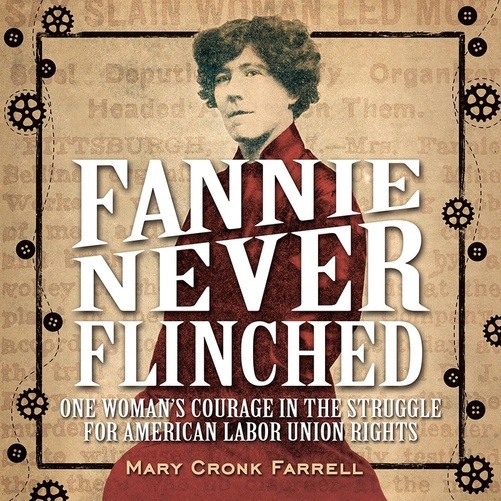 So proud and excited to show off this cover! The book is due out from
Abrams Books for Young People
November 1st. They have done a fabulous job turning my story into a piece of art.
So proud and excited to show off this cover! The book is due out from
Abrams Books for Young People
November 1st. They have done a fabulous job turning my story into a piece of art.This project has been a labor of love since I ran across Fannie Sellins on the internet more than ten years ago! As with any important undertaking, I stumbled through many challenges on the way.
Fannie Sellins entered my life via a Google search on American labor history back in 2007. I was working on a teacher's guide for my novel, Fire in the Hole! And here is an entry that turned up: In the Midst of Terror She went out to Her Work .
Who could pass on that? Not me. The article by Mary Lou Hawse started: "Fannie Sellins was a labor organizer -- and from all accounts, she was an exceptional one. But she paid with her life."
I soon discovered much about Fannie's courage and compassion. When immigrant women earning poverty wages in St. Louis sweatshops voted to strike, Fannie Sellins was there. When destitute coal miners dared to unionize in West Virginia, Fannie was there.
When hired gunmen threatened, beat and shot miners walking the picket line in Pennsylvania, Fannie was there. Mine operators would have paid any price to get rid of Fannie. They threatened to kill her, but Fannie refused to go away.
The United Mine Workers Journal called her an "Angel of Mercy," who went into the miners' homes, encouraging their wives and caring for the sick and dying. "Whenever there was a strike, with its inevitable suffering, Mrs. Sellins was found, caring for the women and children through the dark days of the struggle."
I'm so proud and happy to share the story of this courageous women who has inspired me so. By the way, you can pre-order the book now.
As always, thanks for your support! We authors are nothing without readers.
Published on May 06, 2016 12:49
April 15, 2016
Do Black Heroines Matter?
Remember Jessica Lynch? The first American POW to be rescued alive since World War II. Blond, blue-eyed, and first-ever female POW.
What about the name Shoshana Johnson? That name ring a bell?
I was shocked to discover Shoshana was captured POW the same time as Jessica, but not rescued for another 13-days.
Oh, and she's black, the first U.S. African American female POW. Below Shosana is being interviewed while in captivity in Iraq, March, 2003.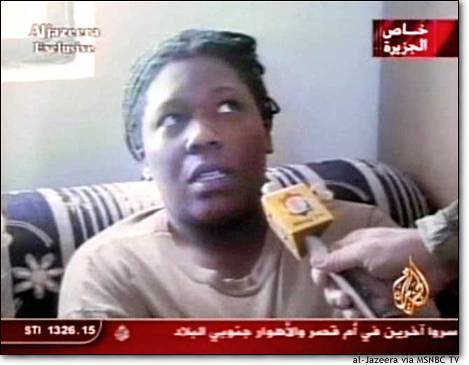 By the time Shoshana came home, the army and news media had made Jessica Lynch an American hero, the girl-next-door who'd been shot and stabbed and still kept firing. Actually, she was hurt in a Humvee crash and her gun jammed before she could get off a shot.
By the time Shoshana came home, the army and news media had made Jessica Lynch an American hero, the girl-next-door who'd been shot and stabbed and still kept firing. Actually, she was hurt in a Humvee crash and her gun jammed before she could get off a shot.
Lori Piestewa. Recognize that name? She was there with Jessica Lynch. She was captured, too!
But Lori died in captivity.
The first American woman to die in Iraq, the first-ever Native American woman to die in combat outside the U.S. (Below: Lori Piestewa-day she deployed to Iraq)
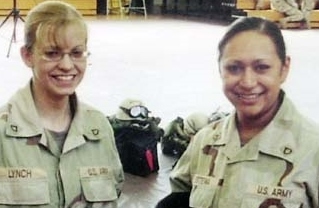 Lori, a Hopi, was the mother of two children. The name Hopi means "Peaceful People" and when the U.S. Cavalry occupied their ancestral lands, the Hopi with stayed true, offering nonviolent resistance.
Lori, a Hopi, was the mother of two children. The name Hopi means "Peaceful People" and when the U.S. Cavalry occupied their ancestral lands, the Hopi with stayed true, offering nonviolent resistance.
Lori believed in peace, but the army offered a good job when she had few options. It was a chance to build a better life for her children.
Jessica and Lori had become friends in basic training. They grew even closer when they were assigned to the 507th Maintenance Company as roommates at Fort Bliss. When the 507th got orders to the Middle East, Lori was not on the list to go because of an injury. Jessica's job as a quartermaster supply clerk was not a combat position, but she was nervous about heading to a war zone.
Lori had a premonition that Jessica or someone else in her unit would get into danger in Iraq, and she wanted to be there to help. She convinced her superiors to add her to the list for deployment.
Three days into the war-- disaster struck.
A U.S. Army investigation blamed the ambush of the 507th on navigational and human error, lack of rest and communication problems. Eleven soldiers died and nine were injured.
The unit had been on its way to Baghdad, the tail end of a 600-vehicle convoy. It’s heavier, slower vehicles bogged down in the sand, fell behind and got lost. After wandering through the desert for hours, the support group of clerks, repairmen and cooks took a wrong turn and stumbled into the city of Nasiriyah. They were surrounded and attacked by paramilitary forces loyal to Saddam Hussein. Here, Marine Corps Lance Cpl. Curney Russell provides a steady arm for Army Spc. Shoshana Johnson after she and four male POWs were rescued in April 2003, Kuwait City, Kuwait.
Here, Marine Corps Lance Cpl. Curney Russell provides a steady arm for Army Spc. Shoshana Johnson after she and four male POWs were rescued in April 2003, Kuwait City, Kuwait.
Shoshana Johnson and Jessica Lynch still suffer from their physical and psychological wounds. In Shoshana's case, the army initially refused to treat her PTSD. Lori Piestewa's family was comforted to hear, like Jessica, she never fired her gun during the ambush. Lori died a Hopi, trying to help a friend.
Click here for the memorial fund for Lori Ann Piestewa's children. Scroll to the bottom of page 3.
U.S. military recruiters target people with few options for education and employment. They sign up black women in numbers highly disproportionate to white women. In Iraq and Afghanistan African American women have also died in higher numbers.
Do black and brown lives matter?
What about the name Shoshana Johnson? That name ring a bell?
I was shocked to discover Shoshana was captured POW the same time as Jessica, but not rescued for another 13-days.
Oh, and she's black, the first U.S. African American female POW. Below Shosana is being interviewed while in captivity in Iraq, March, 2003.
 By the time Shoshana came home, the army and news media had made Jessica Lynch an American hero, the girl-next-door who'd been shot and stabbed and still kept firing. Actually, she was hurt in a Humvee crash and her gun jammed before she could get off a shot.
By the time Shoshana came home, the army and news media had made Jessica Lynch an American hero, the girl-next-door who'd been shot and stabbed and still kept firing. Actually, she was hurt in a Humvee crash and her gun jammed before she could get off a shot.Lori Piestewa. Recognize that name? She was there with Jessica Lynch. She was captured, too!
But Lori died in captivity.
The first American woman to die in Iraq, the first-ever Native American woman to die in combat outside the U.S. (Below: Lori Piestewa-day she deployed to Iraq)

 Lori, a Hopi, was the mother of two children. The name Hopi means "Peaceful People" and when the U.S. Cavalry occupied their ancestral lands, the Hopi with stayed true, offering nonviolent resistance.
Lori, a Hopi, was the mother of two children. The name Hopi means "Peaceful People" and when the U.S. Cavalry occupied their ancestral lands, the Hopi with stayed true, offering nonviolent resistance. Lori believed in peace, but the army offered a good job when she had few options. It was a chance to build a better life for her children.
Jessica and Lori had become friends in basic training. They grew even closer when they were assigned to the 507th Maintenance Company as roommates at Fort Bliss. When the 507th got orders to the Middle East, Lori was not on the list to go because of an injury. Jessica's job as a quartermaster supply clerk was not a combat position, but she was nervous about heading to a war zone.
Lori had a premonition that Jessica or someone else in her unit would get into danger in Iraq, and she wanted to be there to help. She convinced her superiors to add her to the list for deployment.
Three days into the war-- disaster struck.
A U.S. Army investigation blamed the ambush of the 507th on navigational and human error, lack of rest and communication problems. Eleven soldiers died and nine were injured.
The unit had been on its way to Baghdad, the tail end of a 600-vehicle convoy. It’s heavier, slower vehicles bogged down in the sand, fell behind and got lost. After wandering through the desert for hours, the support group of clerks, repairmen and cooks took a wrong turn and stumbled into the city of Nasiriyah. They were surrounded and attacked by paramilitary forces loyal to Saddam Hussein.
 Here, Marine Corps Lance Cpl. Curney Russell provides a steady arm for Army Spc. Shoshana Johnson after she and four male POWs were rescued in April 2003, Kuwait City, Kuwait.
Here, Marine Corps Lance Cpl. Curney Russell provides a steady arm for Army Spc. Shoshana Johnson after she and four male POWs were rescued in April 2003, Kuwait City, Kuwait. Shoshana Johnson and Jessica Lynch still suffer from their physical and psychological wounds. In Shoshana's case, the army initially refused to treat her PTSD. Lori Piestewa's family was comforted to hear, like Jessica, she never fired her gun during the ambush. Lori died a Hopi, trying to help a friend.
Click here for the memorial fund for Lori Ann Piestewa's children. Scroll to the bottom of page 3.
U.S. military recruiters target people with few options for education and employment. They sign up black women in numbers highly disproportionate to white women. In Iraq and Afghanistan African American women have also died in higher numbers.
Do black and brown lives matter?
Published on April 15, 2016 13:24
Do Black Heroines Natter?
Remember Jessica Lynch? The first American POW to be rescued alive since World War II. Blond, blue-eyed, and first-ever female POW.
What about the name Shoshana Johnson? That name ring a bell?
I was shocked to discover Shoshana was captured POW the same time as Jessica, but not rescued for another 13-days.
Oh, and she's black, the first U.S. African American female POW. Below Shosana is being interviewed while in captivity in Iraq, March, 2003. By the time Shoshana came home, the army and news media had made Jessica Lynch an American hero, the girl-next-door who'd been shot and stabbed and still kept firing. Actually, she was hurt in a Humvee crash and her gun jammed before she could get off a shot.
By the time Shoshana came home, the army and news media had made Jessica Lynch an American hero, the girl-next-door who'd been shot and stabbed and still kept firing. Actually, she was hurt in a Humvee crash and her gun jammed before she could get off a shot.
Lori Piestewa. Recognize that name? She was there with Jessica Lynch. She was captured, too!
But Lori died in captivity.
The first American woman to die in Iraq, the first-ever Native American woman to die in combat outside the U.S. (Below: Lori Piestewa-day she deployed to Iraq)
 Lori, a Hopi, was the mother of two children. The name Hopi means "Peaceful People" and when the U.S. Cavalry occupied their ancestral lands, the Hopi with stayed true, offering nonviolent resistance.
Lori, a Hopi, was the mother of two children. The name Hopi means "Peaceful People" and when the U.S. Cavalry occupied their ancestral lands, the Hopi with stayed true, offering nonviolent resistance.
Lori believed in peace, but the army offered a good job when she had few options. It was a chance to build a better life for her children.
Jessica and Lori had become friends in basic training. They grew even closer when they were assigned to the 507th Maintenance Company as roommates at Fort Bliss. When the 507th got orders to the Middle East, Lori was not on the list to go because of an injury. Jessica's job as a quartermaster supply clerk was not a combat position, but she was nervous about heading to a war zone.
Lori had a premonition that Jessica or someone else in her unit would get into danger in Iraq, and she wanted to be there to help. She convinced her superiors to add her to the list for deployment.
Three days into the war-- disaster struck.
A U.S. Army investigation blamed the ambush of the 507th on navigational and human error, lack of rest and communication problems. Eleven soldiers died and nine were injured.
The unit had been on its way to Baghdad, the tail end of a 600-vehicle convoy. It’s heavier, slower vehicles bogged down in the sand, fell behind and got lost. After wandering through the desert for hours, the support group of clerks, repairmen and cooks took a wrong turn and stumbled into the city of Nasiriyah. They were surrounded and attacked by paramilitary forces loyal to Saddam Hussein. Here, Marine Corps Lance Cpl. Curney Russell provides a steady arm for Army Spc. Shoshana Johnson after she and four male POWs were rescued in April 2003, Kuwait City, Kuwait.
Here, Marine Corps Lance Cpl. Curney Russell provides a steady arm for Army Spc. Shoshana Johnson after she and four male POWs were rescued in April 2003, Kuwait City, Kuwait.
Shoshana Johnson and Jessica Lynch still suffer from their physical and psychological wounds. In Shoshana's case, the army initially refused to treat her PTSD. Lori Piestewa's family was comforted to hear, like Jessica, she never fired her gun during the ambush. Lori died a Hopi, trying to help a friend.
Click here for the memorial fund for Lori Ann Piestewa's children. Scroll to the bottom of page 3.
U.S. military recruiters target people with few options for education and employment. They sign up black women in numbers highly disproportionate to white women. In Iraq and Afghanistan African American women have also died in higher numbers.
Do black and brown lives matter?
What about the name Shoshana Johnson? That name ring a bell?
I was shocked to discover Shoshana was captured POW the same time as Jessica, but not rescued for another 13-days.
Oh, and she's black, the first U.S. African American female POW. Below Shosana is being interviewed while in captivity in Iraq, March, 2003.
 By the time Shoshana came home, the army and news media had made Jessica Lynch an American hero, the girl-next-door who'd been shot and stabbed and still kept firing. Actually, she was hurt in a Humvee crash and her gun jammed before she could get off a shot.
By the time Shoshana came home, the army and news media had made Jessica Lynch an American hero, the girl-next-door who'd been shot and stabbed and still kept firing. Actually, she was hurt in a Humvee crash and her gun jammed before she could get off a shot.Lori Piestewa. Recognize that name? She was there with Jessica Lynch. She was captured, too!
But Lori died in captivity.
The first American woman to die in Iraq, the first-ever Native American woman to die in combat outside the U.S. (Below: Lori Piestewa-day she deployed to Iraq)

 Lori, a Hopi, was the mother of two children. The name Hopi means "Peaceful People" and when the U.S. Cavalry occupied their ancestral lands, the Hopi with stayed true, offering nonviolent resistance.
Lori, a Hopi, was the mother of two children. The name Hopi means "Peaceful People" and when the U.S. Cavalry occupied their ancestral lands, the Hopi with stayed true, offering nonviolent resistance. Lori believed in peace, but the army offered a good job when she had few options. It was a chance to build a better life for her children.
Jessica and Lori had become friends in basic training. They grew even closer when they were assigned to the 507th Maintenance Company as roommates at Fort Bliss. When the 507th got orders to the Middle East, Lori was not on the list to go because of an injury. Jessica's job as a quartermaster supply clerk was not a combat position, but she was nervous about heading to a war zone.
Lori had a premonition that Jessica or someone else in her unit would get into danger in Iraq, and she wanted to be there to help. She convinced her superiors to add her to the list for deployment.
Three days into the war-- disaster struck.
A U.S. Army investigation blamed the ambush of the 507th on navigational and human error, lack of rest and communication problems. Eleven soldiers died and nine were injured.
The unit had been on its way to Baghdad, the tail end of a 600-vehicle convoy. It’s heavier, slower vehicles bogged down in the sand, fell behind and got lost. After wandering through the desert for hours, the support group of clerks, repairmen and cooks took a wrong turn and stumbled into the city of Nasiriyah. They were surrounded and attacked by paramilitary forces loyal to Saddam Hussein.
 Here, Marine Corps Lance Cpl. Curney Russell provides a steady arm for Army Spc. Shoshana Johnson after she and four male POWs were rescued in April 2003, Kuwait City, Kuwait.
Here, Marine Corps Lance Cpl. Curney Russell provides a steady arm for Army Spc. Shoshana Johnson after she and four male POWs were rescued in April 2003, Kuwait City, Kuwait. Shoshana Johnson and Jessica Lynch still suffer from their physical and psychological wounds. In Shoshana's case, the army initially refused to treat her PTSD. Lori Piestewa's family was comforted to hear, like Jessica, she never fired her gun during the ambush. Lori died a Hopi, trying to help a friend.
Click here for the memorial fund for Lori Ann Piestewa's children. Scroll to the bottom of page 3.
U.S. military recruiters target people with few options for education and employment. They sign up black women in numbers highly disproportionate to white women. In Iraq and Afghanistan African American women have also died in higher numbers.
Do black and brown lives matter?
Published on April 15, 2016 13:24
Do Black Heroes Matter?
Remember Jessica Lynch? The first American POW to be rescued alive since World War II. Blond, blue-eyed, and first-ever female POW.
What about the name Shoshana Johnson? That name ring a bell?
I was shocked to discover Shoshana was captured POW the same time as Jessica, but not rescued for another 13-days.
Oh, and she's black, the first U.S. African American female POW. Below Shosana is being interviewed while in captivity in Iraq, March, 2003. By the time Shoshana came home, the army and news media had made Jessica Lynch an American hero, the girl-next-door who'd been shot and stabbed and still kept firing. Actually, she was hurt in a Humvee crash and her gun jammed before she could get off a shot.
By the time Shoshana came home, the army and news media had made Jessica Lynch an American hero, the girl-next-door who'd been shot and stabbed and still kept firing. Actually, she was hurt in a Humvee crash and her gun jammed before she could get off a shot.
Lori Piestewa. Recognize that name? She was there with Jessica Lynch. She was captured, too!
But Lori died in captivity.
The first American woman to die in Iraq, the first-ever Native American woman to die in combat outside the U.S. (Below: Lori Piestewa-day she deployed to Iraq)
 Lori, a Hopi, was the mother of two children. The name Hopi means "Peaceful People" and when the U.S. Cavalry occupied their ancestral lands, the Hopi with stayed true, offering nonviolent resistance.
Lori, a Hopi, was the mother of two children. The name Hopi means "Peaceful People" and when the U.S. Cavalry occupied their ancestral lands, the Hopi with stayed true, offering nonviolent resistance.
Lori believed in peace, but the army offered a good job when she had few options. It was a chance to build a better life for her children.
Jessica and Lori had become friends in basic training. They grew even closer when they were assigned to the 507th Maintenance Company as roommates at Fort Bliss. When the 507th got orders to the Middle East, Lori was not on the list to go because of an injury. Jessica's job as a quartermaster supply clerk was not a combat position, but she was nervous about heading to a war zone.
Lori had a premonition that Jessica or someone else in her unit would get into danger in Iraq, and she wanted to be there to help. She convinced her superiors to add her to the list for deployment.
Three days into the war-- disaster struck.
A U.S. Army investigation blamed the ambush of the 507th on navigational and human error, lack of rest and communication problems. Eleven soldiers died and nine were injured.
The unit had been on its way to Baghdad, the tail end of a 600-vehicle convoy. It’s heavier, slower vehicles bogged down in the sand, fell behind and got lost. After wandering through the desert for hours, the support group of clerks, repairmen and cooks took a wrong turn and stumbled into the city of Nasiriyah. They were surrounded and attacked by paramilitary forces loyal to Saddam Hussein. Here, Marine Corps Lance Cpl. Curney Russell provides a steady arm for Army Spc. Shoshana Johnson after she and four male POWs were rescued in April 2003, Kuwait City, Kuwait.
Here, Marine Corps Lance Cpl. Curney Russell provides a steady arm for Army Spc. Shoshana Johnson after she and four male POWs were rescued in April 2003, Kuwait City, Kuwait.
Shoshana Johnson and Jessica Lynch still suffer from their physical and psychological wounds. In Shoshana's case, the army initially refused to treat her PTSD. Lori Piestewa's family was comforted to hear, like Jessica, she never fired her gun during the ambush. Lori died a Hopi, trying to help a friend.
Click here for the memorial fund for Lori Ann Piestewa's children. Scroll to the bottom of page 3.
U.S. military recruiters target people with few options for education and employment. They sign up black women in numbers highly disproportionate to white women. In Iraq and Afghanistan African American women have also died in higher numbers.
Do black and brown lives matter?
What about the name Shoshana Johnson? That name ring a bell?
I was shocked to discover Shoshana was captured POW the same time as Jessica, but not rescued for another 13-days.
Oh, and she's black, the first U.S. African American female POW. Below Shosana is being interviewed while in captivity in Iraq, March, 2003.
 By the time Shoshana came home, the army and news media had made Jessica Lynch an American hero, the girl-next-door who'd been shot and stabbed and still kept firing. Actually, she was hurt in a Humvee crash and her gun jammed before she could get off a shot.
By the time Shoshana came home, the army and news media had made Jessica Lynch an American hero, the girl-next-door who'd been shot and stabbed and still kept firing. Actually, she was hurt in a Humvee crash and her gun jammed before she could get off a shot.Lori Piestewa. Recognize that name? She was there with Jessica Lynch. She was captured, too!
But Lori died in captivity.
The first American woman to die in Iraq, the first-ever Native American woman to die in combat outside the U.S. (Below: Lori Piestewa-day she deployed to Iraq)

 Lori, a Hopi, was the mother of two children. The name Hopi means "Peaceful People" and when the U.S. Cavalry occupied their ancestral lands, the Hopi with stayed true, offering nonviolent resistance.
Lori, a Hopi, was the mother of two children. The name Hopi means "Peaceful People" and when the U.S. Cavalry occupied their ancestral lands, the Hopi with stayed true, offering nonviolent resistance. Lori believed in peace, but the army offered a good job when she had few options. It was a chance to build a better life for her children.
Jessica and Lori had become friends in basic training. They grew even closer when they were assigned to the 507th Maintenance Company as roommates at Fort Bliss. When the 507th got orders to the Middle East, Lori was not on the list to go because of an injury. Jessica's job as a quartermaster supply clerk was not a combat position, but she was nervous about heading to a war zone.
Lori had a premonition that Jessica or someone else in her unit would get into danger in Iraq, and she wanted to be there to help. She convinced her superiors to add her to the list for deployment.
Three days into the war-- disaster struck.
A U.S. Army investigation blamed the ambush of the 507th on navigational and human error, lack of rest and communication problems. Eleven soldiers died and nine were injured.
The unit had been on its way to Baghdad, the tail end of a 600-vehicle convoy. It’s heavier, slower vehicles bogged down in the sand, fell behind and got lost. After wandering through the desert for hours, the support group of clerks, repairmen and cooks took a wrong turn and stumbled into the city of Nasiriyah. They were surrounded and attacked by paramilitary forces loyal to Saddam Hussein.
 Here, Marine Corps Lance Cpl. Curney Russell provides a steady arm for Army Spc. Shoshana Johnson after she and four male POWs were rescued in April 2003, Kuwait City, Kuwait.
Here, Marine Corps Lance Cpl. Curney Russell provides a steady arm for Army Spc. Shoshana Johnson after she and four male POWs were rescued in April 2003, Kuwait City, Kuwait. Shoshana Johnson and Jessica Lynch still suffer from their physical and psychological wounds. In Shoshana's case, the army initially refused to treat her PTSD. Lori Piestewa's family was comforted to hear, like Jessica, she never fired her gun during the ambush. Lori died a Hopi, trying to help a friend.
Click here for the memorial fund for Lori Ann Piestewa's children. Scroll to the bottom of page 3.
U.S. military recruiters target people with few options for education and employment. They sign up black women in numbers highly disproportionate to white women. In Iraq and Afghanistan African American women have also died in higher numbers.
Do black and brown lives matter?
Published on April 15, 2016 13:24
April 7, 2016
Can Ants Teach Us to Be More Human?
The battles in the Irish Parliament this week make me feel a little less embarrassed about the bitter gridlock in American politics. But mostly, I'm sick at heart about why we can't do better. Working together demonstrates our humanity.
But ants work together better than humans. (Photo courtesy www.surespeech.co.uk) Each ant selflessly does their own job and the whole colony works together to achieve a common goal. But did you know that different species of
ants who hate each other co-exist and work together?
Compare that to the United States Congress.
(Photo courtesy www.surespeech.co.uk) Each ant selflessly does their own job and the whole colony works together to achieve a common goal. But did you know that different species of
ants who hate each other co-exist and work together?
Compare that to the United States Congress.
In 1939, a republican senator, Elizabeth Norse got together with a democrat senator, Robert Wagner. They both wanted to do something in response to Germany's Kristallnacht pogrom against the Jews. The two worked together on legislation to allow 20,000 German Jewish children to immigrate to the United States.
Members on both sides of Congress came together to support the legislation, including former President Herbert Hoover, who'd led efforts that restricted immigration ten years earlier.
I wish this story had a happy ending. But opponents mobilized against the bill. President Theodore Roosevelt remained silent on the issue, and congress killed it. I wish we would learn more from history. Kindertransport evacuated Jewish children from Nazi Europe to Great Britain.
Kindertransport evacuated Jewish children from Nazi Europe to Great Britain. 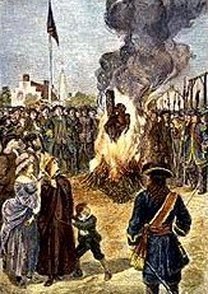 Did you know during the Salem Witch Trials in 1692, citizens of New York City righteously criticized the authorities in Salem for convicting people on the basis or hysterical witnesses, executing them on little actual evidence?
Did you know during the Salem Witch Trials in 1692, citizens of New York City righteously criticized the authorities in Salem for convicting people on the basis or hysterical witnesses, executing them on little actual evidence?
Did you know 50-years later, New Yorkers--fearing not the devil, but a slave revolt--conducted their own witch hunt complete with hysterical witnesses and deadly justice. Remembered as the "Bonfires of the Negroes," 17 blacks were hanged, along with 4 white "ringleaders," 13 African slaves were burned at the stake and 70 more shipped to the Caribbean and sold. I wish we could learn more from history.
Enough depressing stories. Please share a time you've overcome fear, or difference, or indifference, and worked together for better.
But ants work together better than humans.
 (Photo courtesy www.surespeech.co.uk) Each ant selflessly does their own job and the whole colony works together to achieve a common goal. But did you know that different species of
ants who hate each other co-exist and work together?
Compare that to the United States Congress.
(Photo courtesy www.surespeech.co.uk) Each ant selflessly does their own job and the whole colony works together to achieve a common goal. But did you know that different species of
ants who hate each other co-exist and work together?
Compare that to the United States Congress. In 1939, a republican senator, Elizabeth Norse got together with a democrat senator, Robert Wagner. They both wanted to do something in response to Germany's Kristallnacht pogrom against the Jews. The two worked together on legislation to allow 20,000 German Jewish children to immigrate to the United States.
Members on both sides of Congress came together to support the legislation, including former President Herbert Hoover, who'd led efforts that restricted immigration ten years earlier.
I wish this story had a happy ending. But opponents mobilized against the bill. President Theodore Roosevelt remained silent on the issue, and congress killed it. I wish we would learn more from history.
 Kindertransport evacuated Jewish children from Nazi Europe to Great Britain.
Kindertransport evacuated Jewish children from Nazi Europe to Great Britain.  Did you know during the Salem Witch Trials in 1692, citizens of New York City righteously criticized the authorities in Salem for convicting people on the basis or hysterical witnesses, executing them on little actual evidence?
Did you know during the Salem Witch Trials in 1692, citizens of New York City righteously criticized the authorities in Salem for convicting people on the basis or hysterical witnesses, executing them on little actual evidence?Did you know 50-years later, New Yorkers--fearing not the devil, but a slave revolt--conducted their own witch hunt complete with hysterical witnesses and deadly justice. Remembered as the "Bonfires of the Negroes," 17 blacks were hanged, along with 4 white "ringleaders," 13 African slaves were burned at the stake and 70 more shipped to the Caribbean and sold. I wish we could learn more from history.
Enough depressing stories. Please share a time you've overcome fear, or difference, or indifference, and worked together for better.
Published on April 07, 2016 21:13
March 25, 2016
Imagine: A Teenage Girl goes to War to Impress Her Mom...and that's just the beginning
Two Women Revolutionized Science and Changed the World.
Irene Curie--not Marie Curie, the Nobel-Prize-winning scientist you've heard about, but her teenage daughter. The story takes one twist after another, and here to tell it is Winifred Conklin author of the new book Radioactive!
Seventeen-year-old Irene Curie volunteered to serve in World War I as an x-ray technician. She used portable x-rays to help surgeons identify shrapnel and perform operations near the battlefield.
Below Irene Curie on a mobile x-ray unit in 1916. Her mother had developed the military x-ray program. Marie wanted to win her mother’s respect, and, frankly, she wanted to spend some time with her mom. This combination of brilliant scientist and vulnerable teen made her an irresistible subject to me.
Her mother had developed the military x-ray program. Marie wanted to win her mother’s respect, and, frankly, she wanted to spend some time with her mom. This combination of brilliant scientist and vulnerable teen made her an irresistible subject to me.
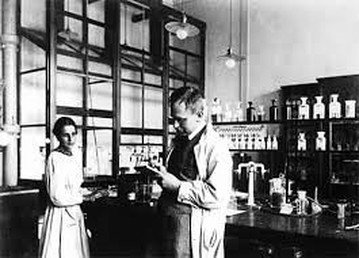 Lise Meitner in the laboratory (1913). The Germans were using x-ray technology, too. Lise Meitner, an Austrian who had been working in Berlin when the war began, performed the same work as Irene. She was an x-ray technician on the German side of WWI.
Lise Meitner in the laboratory (1913). The Germans were using x-ray technology, too. Lise Meitner, an Austrian who had been working in Berlin when the war began, performed the same work as Irene. She was an x-ray technician on the German side of WWI.
Both Curie and Meitner would prove to be among the most accomplished female scientists of the 20th century. These women were among a handful of physicists worldwide who were working on better understanding atomic structure.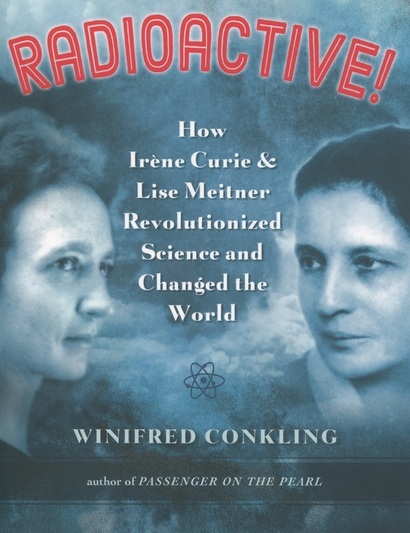
Curie had been born into the “First Family of Science” (both of her parents had won Nobel Prizes), But Meitner had been turned away from higher education programs because she was a woman.
She finally had a chance to study physics at the University of Vienna in 1901, but she repeatedly came up against obstacles.
She was not paid in the early years of her research program, and she had to set up her own laboratory in the basement of the science building because she was not allowed to work in the main lab with the men.
The chief scientist claimed he was afraid her hair would catch fire, even though she wore her hair in a tight bun and the men in the lab almost universally wore elaborate facial hair.
 Otto Stern and Lise Meitner, possibly 1937 colloquy with Nobel Price winners During their careers, both Irene and Lise made important discoveries in the understanding of physics. Curie and her husband, Frederic Joliot, discovered artificial radiation. They won a Nobel Prize in 1934 for their work.
Otto Stern and Lise Meitner, possibly 1937 colloquy with Nobel Price winners During their careers, both Irene and Lise made important discoveries in the understanding of physics. Curie and her husband, Frederic Joliot, discovered artificial radiation. They won a Nobel Prize in 1934 for their work.
Lise had to flee Nazi Germany in 1938, leaving her laboratory and research behind. She continued to consult with her former lab partner, Otto Hahn, and she made the breakthrough in understanding of nuclear fission.
Ultimately, Hahn took credit for her discovery and claimed the Nobel Prize for the work they did together. Lise Meitner and Otto Hahn in West Germany in 1962.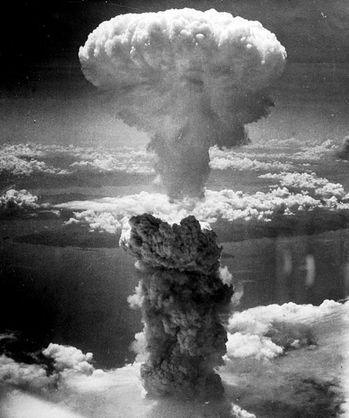 Bombing of Nagasaki, Japan
The women had seen such horrors on the battlefields during World War I that they had become pacifists; both were horrified that the work they did in the name of science had been used for the creation of the most destructive weapon in the history.
Bombing of Nagasaki, Japan
The women had seen such horrors on the battlefields during World War I that they had become pacifists; both were horrified that the work they did in the name of science had been used for the creation of the most destructive weapon in the history.
“It is an unfortunate accident that this discovery (of fission) came about in a time of war,” Meitner said.
I find these women inspiring not only because of their accomplishments, but also because of their humanity. They were undeniably gifted scientists, but they also held fast to their love of peace. Curie dedicated her later years to working for nuclear disarmament; Meitner worked on the development of nuclear energy.
They were undeniably gifted scientists, but they also held fast to their love of peace. Curie dedicated her later years to working for nuclear disarmament; Meitner worked on the development of nuclear energy.
Throughout their lives, they both envisioned a world where scientists could master the art of using the power of the atom not for a weapon but for the benefit of humankind.
Winifred, thrilled to have you on the blog today, and to highlight your wonderful book. Thank you!
Winifred Conkling is an award-winning author of fiction and nonfiction for young readers whose works include Passenger on the Pearl: The True Story of Emily Edmonson’s Flight from Slavery (Algonquin, 2015) and the middle-grade novel Sylvia and Aki, winner of the Jane Addams Children’s Literature Award and the Tomás Rivera Award. See more about Winifred's books here.
Irene Curie--not Marie Curie, the Nobel-Prize-winning scientist you've heard about, but her teenage daughter. The story takes one twist after another, and here to tell it is Winifred Conklin author of the new book Radioactive!
Seventeen-year-old Irene Curie volunteered to serve in World War I as an x-ray technician. She used portable x-rays to help surgeons identify shrapnel and perform operations near the battlefield.
Below Irene Curie on a mobile x-ray unit in 1916.
 Her mother had developed the military x-ray program. Marie wanted to win her mother’s respect, and, frankly, she wanted to spend some time with her mom. This combination of brilliant scientist and vulnerable teen made her an irresistible subject to me.
Her mother had developed the military x-ray program. Marie wanted to win her mother’s respect, and, frankly, she wanted to spend some time with her mom. This combination of brilliant scientist and vulnerable teen made her an irresistible subject to me.
 Lise Meitner in the laboratory (1913). The Germans were using x-ray technology, too. Lise Meitner, an Austrian who had been working in Berlin when the war began, performed the same work as Irene. She was an x-ray technician on the German side of WWI.
Lise Meitner in the laboratory (1913). The Germans were using x-ray technology, too. Lise Meitner, an Austrian who had been working in Berlin when the war began, performed the same work as Irene. She was an x-ray technician on the German side of WWI. Both Curie and Meitner would prove to be among the most accomplished female scientists of the 20th century. These women were among a handful of physicists worldwide who were working on better understanding atomic structure.

Curie had been born into the “First Family of Science” (both of her parents had won Nobel Prizes), But Meitner had been turned away from higher education programs because she was a woman.
She finally had a chance to study physics at the University of Vienna in 1901, but she repeatedly came up against obstacles.
She was not paid in the early years of her research program, and she had to set up her own laboratory in the basement of the science building because she was not allowed to work in the main lab with the men.
The chief scientist claimed he was afraid her hair would catch fire, even though she wore her hair in a tight bun and the men in the lab almost universally wore elaborate facial hair.
 Otto Stern and Lise Meitner, possibly 1937 colloquy with Nobel Price winners During their careers, both Irene and Lise made important discoveries in the understanding of physics. Curie and her husband, Frederic Joliot, discovered artificial radiation. They won a Nobel Prize in 1934 for their work.
Otto Stern and Lise Meitner, possibly 1937 colloquy with Nobel Price winners During their careers, both Irene and Lise made important discoveries in the understanding of physics. Curie and her husband, Frederic Joliot, discovered artificial radiation. They won a Nobel Prize in 1934 for their work.Lise had to flee Nazi Germany in 1938, leaving her laboratory and research behind. She continued to consult with her former lab partner, Otto Hahn, and she made the breakthrough in understanding of nuclear fission.
Ultimately, Hahn took credit for her discovery and claimed the Nobel Prize for the work they did together. Lise Meitner and Otto Hahn in West Germany in 1962.
 Bombing of Nagasaki, Japan
The women had seen such horrors on the battlefields during World War I that they had become pacifists; both were horrified that the work they did in the name of science had been used for the creation of the most destructive weapon in the history.
Bombing of Nagasaki, Japan
The women had seen such horrors on the battlefields during World War I that they had become pacifists; both were horrified that the work they did in the name of science had been used for the creation of the most destructive weapon in the history.
“It is an unfortunate accident that this discovery (of fission) came about in a time of war,” Meitner said.
I find these women inspiring not only because of their accomplishments, but also because of their humanity.
 They were undeniably gifted scientists, but they also held fast to their love of peace. Curie dedicated her later years to working for nuclear disarmament; Meitner worked on the development of nuclear energy.
They were undeniably gifted scientists, but they also held fast to their love of peace. Curie dedicated her later years to working for nuclear disarmament; Meitner worked on the development of nuclear energy. Throughout their lives, they both envisioned a world where scientists could master the art of using the power of the atom not for a weapon but for the benefit of humankind.
Winifred, thrilled to have you on the blog today, and to highlight your wonderful book. Thank you!
Winifred Conkling is an award-winning author of fiction and nonfiction for young readers whose works include Passenger on the Pearl: The True Story of Emily Edmonson’s Flight from Slavery (Algonquin, 2015) and the middle-grade novel Sylvia and Aki, winner of the Jane Addams Children’s Literature Award and the Tomás Rivera Award. See more about Winifred's books here.
Published on March 25, 2016 01:00
March 18, 2016
We Need Diverse Books: Here's a Story that Needs a Writer!
 Thanks to photographer Bob Coleman for sharing this photo of the Nisqually Wildlife Refuge, so to be re-named the Billy Frank, Jr. Wildlife Refuge.
Thanks to photographer Bob Coleman for sharing this photo of the Nisqually Wildlife Refuge, so to be re-named the Billy Frank, Jr. Wildlife Refuge. Billy Frank Jr. grew up on the Nisqually river in Western Washington, becoming an expert fisherman at a young age, knowing every current of the river, and every creature that made its home in the delta.
The Medicine Creek Treaty had guaranteed Washington tribes the right to fish in their "usual and accustomed places back in 1854. But in 1945. When Billy was just fourteen, state fish and game wardens arrested him for "illegal fishing".
 Billy knew then he’d have to fight for his right to fish, for his the culture and his heritage. But most of that would come after his stint in the U.S. Marines during the Korean War.
Billy knew then he’d have to fight for his right to fish, for his the culture and his heritage. But most of that would come after his stint in the U.S. Marines during the Korean War.When he returned, things hadn't changed. His boats and nets were confiscated, he lived like an outlaw, fishing at night, always on the lookout for men in uniforms.
He was "chased and tear-gassed, tackled, punched, pushed face-first into the mud, handcuffed and dragged soaking wet to the country jail."
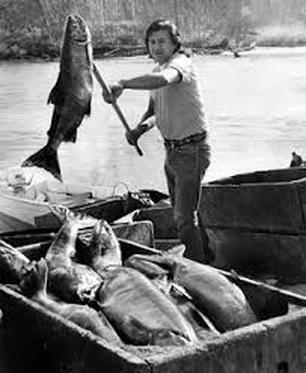 Billy Frank Jr., photo courtesy of the NW Indian Fisheries Commission. Billy Frank Jr. was arrested 50 times fishing on the Nisqually River over next thirty years, as he spearheaded the civil disobedience movement for treaty fishing rights for the Northwest Coast Salish people.
Billy Frank Jr., photo courtesy of the NW Indian Fisheries Commission. Billy Frank Jr. was arrested 50 times fishing on the Nisqually River over next thirty years, as he spearheaded the civil disobedience movement for treaty fishing rights for the Northwest Coast Salish people.
There would be protests at the state Capitol, a full-scale riot on the banks of the Puyallup River in 1970, myriad lawsuits and finally a U.S. Supreme Court ruling in 1979 before the so-called fish wars in Washington were resolved.
Following that victory, Billy Frank Jr. led conservation efforts to restore and protect Puget Sound, worked to unite local tribes and became a national voice for Indian Country.
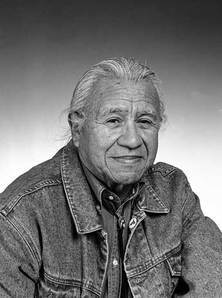 After his death in 2014, President Obama posthumously awarded Frank the Presidential Medal of Freedom, the highest honor that can be given a US civilian.
After his death in 2014, President Obama posthumously awarded Frank the Presidential Medal of Freedom, the highest honor that can be given a US civilian.“He saved the salmon that had fed his family for generations,” President Obama said. “He was spat on, shot at, chased, clubbed and cast as an outlaw, but Billy kept fighting because he knew he was right.”
This is a man of courage and many other laudable qualities who was instrumental in creating more justice for Native tribes. His story should be a book for kids, written by a Native American. Maybe I could be a mentor, helping with writing and knowledge of the publishing business?
A new school curriculum on tribal treaty fishing rights and salmon conservation has been developed for free download and use by teachers.
The lessons are intended to supplement history and science classes, middle through high school and include videos and historical photos.
Published on March 18, 2016 11:45
March 11, 2016
Announcing My New Book!
Coming in September!
Irena's Children
Young Readers Edition The "Female Oskar Schindler"
The "Female Oskar Schindler"
From the publisher...
At long last, the extraordinary and long forgotten story of Irena Sendler—who took staggering risks to save 2,500 children from death and deportation in Nazi-occupied Poland during World War II—now adapted for a younger audience.
Irena Sendler was a young Polish woman living in Warsaw during World War II. With guts of steel, Irena crossed the walled Jewish ghetto with babies in toolboxes and coffins, snuck them under overcoats at checkpoints, and slipped them through the dank sewers. Then she convinced her friends and underground resistance network to hide them.
In this heroic tale of survival and selflessness, Tilar Mazzeo and adapter Mary Cronk Farrell share the true story of this bold and brave woman, who risked her life to save innocent children from the horrors of the Holocaust.
Irena's Children
Young Readers Edition
 The "Female Oskar Schindler"
The "Female Oskar Schindler"From the publisher...
At long last, the extraordinary and long forgotten story of Irena Sendler—who took staggering risks to save 2,500 children from death and deportation in Nazi-occupied Poland during World War II—now adapted for a younger audience.
Irena Sendler was a young Polish woman living in Warsaw during World War II. With guts of steel, Irena crossed the walled Jewish ghetto with babies in toolboxes and coffins, snuck them under overcoats at checkpoints, and slipped them through the dank sewers. Then she convinced her friends and underground resistance network to hide them.
In this heroic tale of survival and selflessness, Tilar Mazzeo and adapter Mary Cronk Farrell share the true story of this bold and brave woman, who risked her life to save innocent children from the horrors of the Holocaust.
Published on March 11, 2016 07:23
March 9, 2016
Cover Reveal Friday!
 Imagine a women who risks her life to save a child.
Imagine a women who risks her life to save a child.Imagine a woman who risks her life every day for 4-years to save children.
Imagine a woman who's tortured and condemned to death for saving the lives of children.
My new book is about this woman! Cover reveal coming next Friday!
Go ahead, take a guess! Who is the subject of this biograghy?
Published on March 09, 2016 07:20



